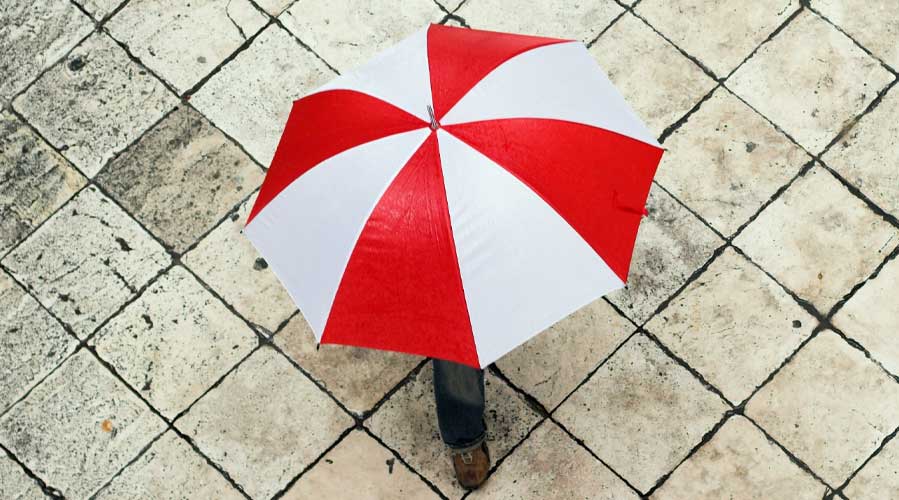Did you find this article useful?

It doesn't matter if you're a homeowner, landlord or tenant. It's important to protect your property and contents with insurance.
There are many different types of home insurance policies to choose from in Singapore. Home contents and fire insurance are the most common property insurance policies sold.
If you're asking yourself, "Do I need home contents insurance?" or "What home insurance should I get?", then read on. You might feel more confident about what you need to best protect your investment at every stage of your life.
Home contents insurance is a type of property insurance. It covers the contents and personal belongings in your home. It also protects the physical structure, fixtures and home renovations from unexpected events, such as:
While home insurance is optional, you shouldn't overlook the importance of protecting your home and peace of mind. With home insurance, you can get coverage to:
Some common misconceptions for not buying home insurance are that the premiums are too high and that it's not worth it. It would cost a lot to rebuild your home and replace all your belongings, but you can't put a price on everything.
Having home contents insurance helps to cover some of your financial losses and premiums, depending on the level of coverage you're looking at.
Singapore statistically has low crime rates but burglaries may happen. Your home insurance policy will cover you for stolen items and money, and even for damage to your security systems as a result of theft or an attempted break in.
HSBC HomeSure home contents insurance provides 1, 2 and 3-year plans of up to SGD300,000[@supreme-plan-limit] for your renovations, movable household items, personal belongings and valuables. You'll also get 24-hour emergency home assistance and lock and key replacement service.
If you need extra coverage, you can opt for cover add-ons:
Scenario 1:
You came back after a holiday, only to find that your house had been burgled. Locks broken, security system damaged, and your laptops and jewellery stolen. While no one was hurt, it will cost thousands to replace or fix these items.
Your HSBC HomeSure Classic Plan will cover up to SGD75,000 (with a SGD50 excess for each loss) of your home contents and SGD1,000 to temporarily cover up the broken windows until they're repaired.
Scenario 2:
Your roof, fence and living room window were damaged by a storm. Your furniture and laptop got ruined – looks like you'll need to replace some items.
The HomeSure Supreme Plan covers a sum insured of up to SGD300,000 (with an excess of SGD100 for each loss for damage caused by a storm). Your optional add-on covers the surveyors' costs to assess the damage and clean up the debris left behind, and the damage to your building.

From now till 30 April 2025, enjoy 30% premium discount for all HomeSure plans.
What's the difference between home and fire insurance? The benefits and exclusions can vary so it's important to look at the fine print to know what you're covered for.
Fire insurance is compulsory for homeowners who have purchased a Housing & Development Board (HDB) property, or if their property is registered with the Management Corporation Strata Title (MCST). This type of fire insurance is pretty basic – it will cover you for fire-related structural and fixtures damage but not for damage to your furniture or personal belongings.
Every fire insurance policy is different, but you can expect to see most plans cover your home's exterior and fittings. Typical exclusions might include:
For wider coverage, add comprehensive home insurance to your fire insurance to ensure you're not caught out by such exclusions.
When buying insurance, there are a few things to consider, such as the value of your home and its contents, and the deductible you're willing to pay to keep your premiums down. You might also want to create a checklist to understand:
The Singapore government's moneysense website suggests that you calculate your risk to ensure you're adequately covered. Consider whether you live in a flood-prone area, or whether your home complies with local fire regulations. You might need to take out add-ons to cover valuables or items that aren't covered by the basic policy.
On the other hand, having more than one policy doesn't mean you can claim twice. The total payout will depend on the valuation of your home and personal property. Your premiums will depend on the valuation too. If you've downsized or unloaded some belongings that were keeping your premiums high, don't forget to update your insurer with this information.
The more detailed your valuation, the easier compensation will be if you need to use your home insurance.
If you need to make a claim, you should contact your insurance company's claims department as soon as possible.
Don't throw out the damaged goods, and make a police report if necessary. Take colour photographs of the damaged property and prepare your original purchase receipts or invoices. Keeping this all in order ahead of time will make it easier to file a claim.
As well as getting professional advice, you might find it helpful to consider HomeSure. This home contents insurance offers comprehensive coverage for all that's close to your heart.
Did you find this article useful?


